10 unimaginable beauty standards across the world
January 10, 2023
Around the world beauty is expressed in many different ways. Beauty standards in other countries are very different from those in the US, all the way from sharp chiseled teeth, to feet being three inches long. The reason I’m writing an article based on different countries’ beauty standards is because they’re super fascinating. Forget socks and sandals, let’s talk about how the word beautiful is defined in different countries.
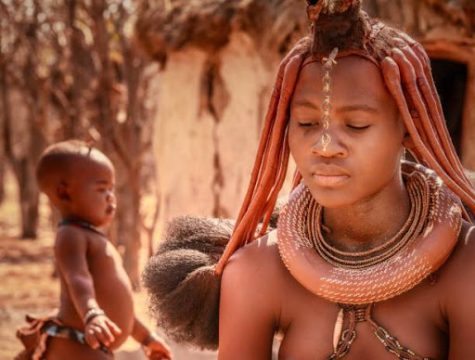
iStock.com
Women in the Himba Tribe – Hairstyles play a significant role within the Himba community and reflect marital status, age, wealth, and rank within the group. Close relatives spend hours creating elaborate and socially symbolic hairstyles. The braids they create are often lengthened by including bits of woven hay, goat hair and artificial hair extensions. Women in the Himba tribe are known for braiding their hair from a paste made from shrubs and red dirt called “otjize” paste. The thick lustrous braids are an indicator of fertility, and men find them extremely attractive.

iStock.com
Elongated Necks – Women of Myanmar are known for their bronze rings that they use to elongate their necks. Depending on the wealth of the family, young girls will start wearing the rings as early as five or six years old. The belief is that the longer the neck, the more beautiful the woman. The Kayan say this custom was originally established to make women less attractive, thereby protecting them from being kidnapped by rival tribes. Nowadays, they are worn to preserve cultural tradition. Although there are some drawbacks, the brass coils weigh 44 pounds, making work in fields extremely painful and difficult. The body modification can be dangerous because if removed, it can snap their spine and kill them.

shutterstock.com
Fang Teeth – Some women in Japan are paying hundreds of dollars to reshape their canine teeth so they look like vampires. It’s called “yaeba,” and men like it because it makes the women look more “childlike.” Popular at dentists in Tokyo, a cosmetic procedure to create the yaeba effect involves attaching non-permanent or permanent adhesive mini-fangs to canine teeth. Yaeba means ‘multilayered’ or ‘double’ tooth, and describes the fanged look achieved when molars crowd the canines, pushing them forward.

shutterstock.com
Lip Plates – Mursi, Chai, and Tirma tribes of Africa are some of the few societies that still place a massive ceramic plate in their lower lip to make them seem more beautiful. It takes women years to stretch their faces, so they start when they’re around 15 years old. Many sources have suggested that the plate’s size was a sign of social or economical importance in some tribes, such as bride-wealth or laziness. However, because of natural mechanical attributes of human skin, the plate’s size may often depend on the marriage status of the wearer.
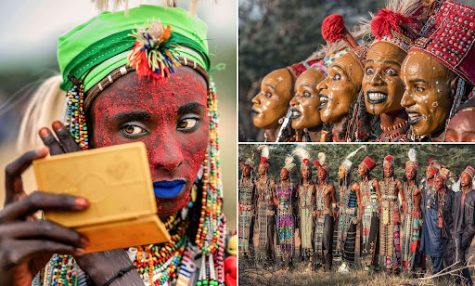
shutterstock.com
Men in the Wodaabe Tribe – Spread across five African countries, the Wodaabe tribe is known for its men who dress in full body makeup and perform elaborate dances in order to attract marriageable women. The men have one week to make a good impression and after the women barter over the most beautiful men. Sometimes known as ‘the world’s vaniest tribe,’ Wodaabe men are known to carry mirrors with them everywhere they go and to spend each morning fixing their appearance before even going to herd cattle.
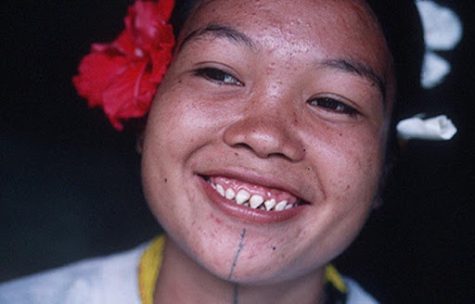
iStock.com
Sharp Chiseled Teeth – Malawian people believe that sharp teeth are a sign of grace and elegance. To achieve the beauty standard, they have to get their teeth chiseled to a point. The process is extremely painful because they don’t have the benefit of anesthetists or painkillers to soothe the operation. Before showing off their new smile after the operation, they have to bite down on soft foods – like green bananas for example – to dull the pain. As well as being painful, some women get their teeth chiseled so their husbands find them more attractive and have less of a desire to leave them.
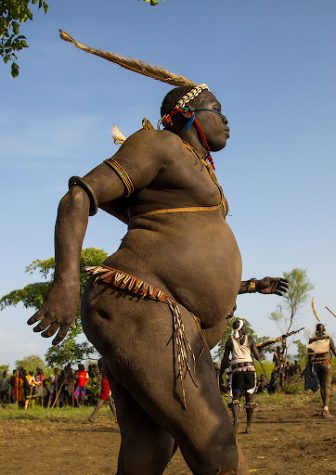
iStock.com
Men of the Ethiopian Bodi Tribe – Most people obsess over being skinny, but in the Bodi tribe, obesity is considered attractive. So the single men sit at home all day for six months, drinking only milk and animal blood so they can gain the most weight to impress marriageable females. But because of the scorching temperatures in Ethiopia, the men have to drink the two-liter bowl of blood and milk quickly before it coagulates, and those that aren’t able to drink that fast will eventually regurgitate everything and would have to drink a second dose. After starting the regime, the men emerge to show off their newly engorged physiques and wait for a winner to be chosen. The champion fat man is then feted as a hero for the rest of his life.

iStock.com
Teeth Blackening – The ancient tradition of Ohaguro dates back to tenth-century Japan and consists of aristocracy painting a dark black dye on their teeth. Teeth blackening is usually done during puberty. It was primarily done to preserve the teeth into old age, as it prevents tooth decay similar to the mechanism of modern dental sealants. It was seen as a sign of maturity, beauty and civilization. A common belief is that blackened teeth differentiated humans from animals. Teeth blackening is often done in conjunction with traditions of tooth sharpening and dental avulsion, as well as other body modification customs like tattoos.
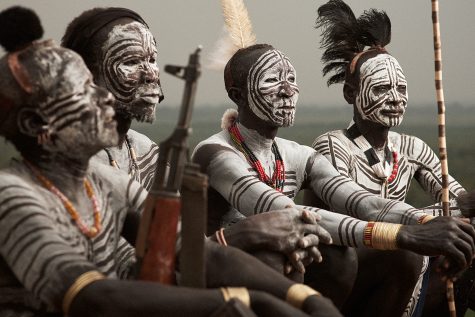
shutterstock.com
Body Painting – For over 500 years, the Karo tribe of Ethiopia has continued a unique tradition where they paint ornate patterns on their bodies with white chalk. In their culture the bright colors represent bravery and courage. So Karo men always paint their bodies before courting women. The specific designs drawn on their bodies can change daily and vary in content, ranging from simple stars or lines to animal motifs, such as guinea fowl plumage, or to the most popular – a myriad of hand prints covering the torso and legs. Both the Karo and the Hamar men use clay to construct elaborate hairstyles and headdresses for themselves, signifying status, beauty and bravery.
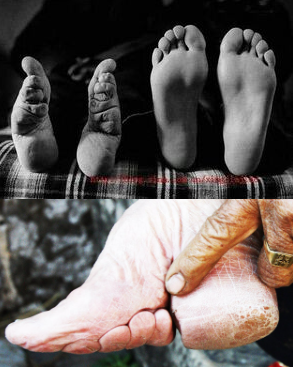
iStock.com
Foot binding – The painful tradition of foot binding has persisted in China for hundreds of years. Essentially women will crush their feet into undersized shoes to prevent their feet from growing, so they start binding their feet at five years old. A small foot in China, no different from a tiny waist in Victorian England, represented the height of female refinement, because women who had bound feet had a higher status than average women, and they were more likely to marry a man of prestige. For families with marriageable daughters, foot size translated into its own form of currency and a means of achieving upward mobility. The most desirable bride possessed a three-inch foot, known as a “golden lotus.” It was respectable to have four-inch feet – a silver lotus – but feet five inches or longer were dismissed as iron lotuses. The marriage prospects for such a girl were dim indeed.
Most beauty standards in the US come and go, but within these countries, these standards have been around for hundreds of years. While many people might think they’re strange or totally crazy, for certain countries these standards are super hard to achieve and that’s one of the reasons why they get such high praise. Some tourists travel to certain parts of the world just to witness the different beauty standards with their own eyes. So I guess the question is, do you think you could pull off one of these unimaginable beauty standards?

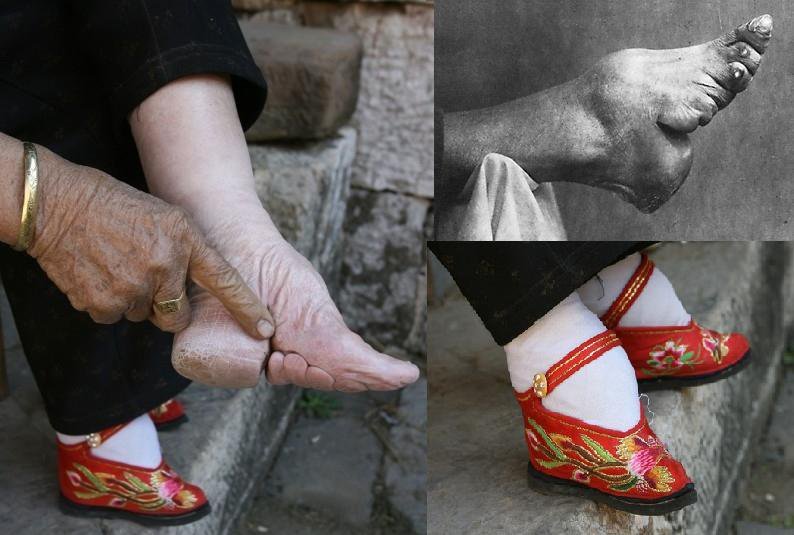
imsobored • Apr 28, 2025 at 3:04 pm
no offense to these traditions, but I find them very unattractive. I guess people have different opinions but when I clicked this website, I expected normal stuff like larger lips, small nose, etc. it’s kinda eerie that people change themselves like this just to be “beautiful” …
imdeppresed • Feb 6, 2025 at 8:36 pm
you slay
unknown • Jan 26, 2025 at 6:25 pm
yall are BOOTIFUL DONT EVER CHANGE :)))
ariana bashorun • Dec 15, 2024 at 12:41 pm
I belive thagt beuaty should not come from what you like but from what makes you human or even how god made you to be, so if their is any men or female reading this you are worth it and loved and beauty should not be the image but what is deep down. Love you, ariana
shannon debussy • Aug 3, 2025 at 7:07 pm
thank you ariana